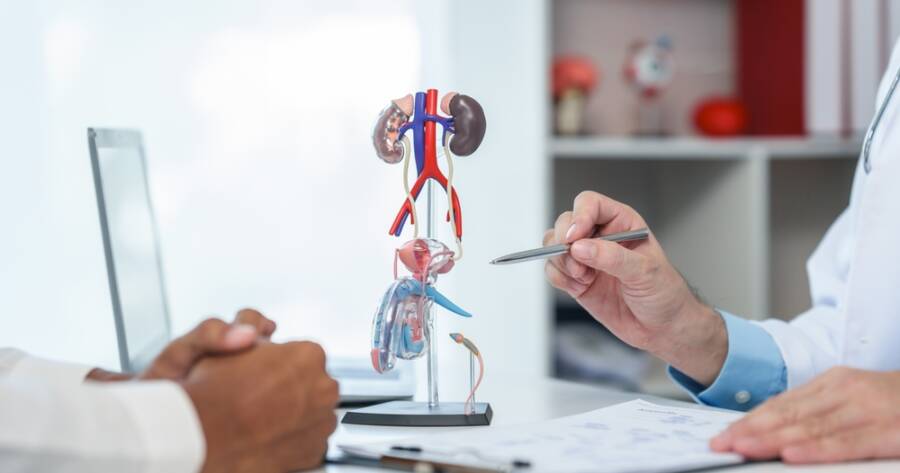Prostate cancer is a significant health concern for men, particularly as they age. Understanding its symptoms and available treatment options is critical for early detection and effective management. This form of cancer affects the prostate, a small gland producing seminal fluid that nourishes and transports sperm. While many prostate cancer cases progress slowly, some may require immediate attention. Being informed about the signs and avenues for care can empower men to take proactive steps in managing their health.
Recognizing the Symptoms of Prostate Cancer
Prostate cancer symptoms often vary depending on the disease’s progression. In early stages, symptoms might be subtle or even absent. As the cancer advances, signs may become more apparent and can include difficulty urinating, decreased flow of urine, or frequent urination, especially at night. These urinary issues arise because the growing tumor may exert pressure on the urethra.
Additional symptoms might encompass discomfort in the pelvic area, bone pain, or erectile dysfunction. Blood in the urine or semen could also occur in more advanced cases. It’s important to note that these symptoms can also be indicative of other non-cancerous conditions, such as benign prostatic hyperplasia (BPH). Consulting healthcare professionals is crucial for distinguishing between prostate cancer and other potential ailments.
Understanding Risk Factors
Several risk factors contribute to the likelihood of developing prostate cancer. Age is a primary factor, with men over 50 facing increased risk. Additionally, family history plays a substantial role; having a father or brother with prostate cancer may double a man’s risk. Genetic predispositions, like mutations in the BRCA1 and BRCA2 genes, have also been linked to higher prostate cancer risks.
Ethnicity influences prostate cancer risk too, affecting incidence and mortality. African and Caribbean descent individuals are at heightened risk, while Asian populations show a lower tendency. Lifestyle factors such as diet, obesity, and physical inactivity have potential associations with prostate cancer. Understanding these risk factors helps in formulating strategies for prevention and encouraging early screening.
Screening and Diagnosis
Screening for prostate cancer typically involves a combination of digital rectal exams (DRE) and prostate-specific antigen (PSA) blood tests. During a DRE, a healthcare provider manually examines the prostate gland for abnormalities. The PSA test measures the level of prostate-specific antigen in the blood, which can be elevated in men with prostate cancer.
While these tests can indicate potential issues, they are not definitive. Elevated PSA levels might result from various causes, including infections or benign conditions. Therefore, further tests, such as a biopsy, are necessary to confirm cancer. Advances in imaging techniques, like MRI scans, accompany biopsy procedures to improve diagnostic accuracy. Discussing screening options with health care providers aids in determining the most appropriate approach.
Exploring Treatment Options
Treatment for prostate cancer varies based on the stage of the disease and individual health factors. For localized prostate cancer, active surveillance may be recommended, involving regular monitoring of the cancer’s progression without immediate intervention. This approach suits men with low-risk cancer and allows them to avoid or delay treatment side effects.
Surgical options like radical prostatectomy involve removing the prostate gland and surrounding tissues. This choice may be advisable for cancer confined to the prostate. Radiation therapy offers another alternative, targeting cancer cells with high-energy rays. Both external beam radiation and brachytherapy (internal radiation) have applications based on cancer specifics.
Hormonal and Chemotherapy Treatments
In cases where prostate cancer has spread beyond the prostate gland, hormonal and chemotherapy treatments may be considered. Hormonal therapy aims to reduce levels of androgens (male hormones) that fuel cancer growth. This treatment can involve medications to block hormone production or surgical procedures like orchiectomy, which lowers circulating testosterone levels.
Chemotherapy involves using drugs to destroy cancer cells or stop them from growing. While not always the first line of treatment, chemotherapy may be employed if cancer has metastasized or returned following other treatments. Both hormonal and chemotherapy treatments carry side effects requiring careful management, reinforcing the importance of collaboration with specialized medical teams.
Emerging Therapies and Innovations
In recent years, significant advancements have emerged in prostate cancer treatment, offering new options for patients. Immunotherapy, which enhances the body’s immune response to target cancer cells, has shown promise in some cases. Additionally, targeted therapies, focusing on specific genetic mutations within cancer cells, provide personalized treatment plans and have gained attention for their potential efficacy.
Another innovative approach is focal therapy, which offers less invasive treatments by targeting specific areas of the prostate rather than the entire gland. Techniques like high-intensity focused ultrasound (HIFU) and cryotherapy fall under this category. These emerging therapies are continually being studied, expanding treatment possibilities for patients and potentially improving outcomes.
Learn More Today
Understanding prostate cancer is integral to promoting proactive health management and addressing early warning signs. Recognizing symptoms and risk factors aids in informed decision-making, while exploring diverse treatment options offers paths to effective management and recovery.
With ongoing research and medical advancements, patients have access to innovative therapies that may transform treatment landscapes. Engaging with healthcare professionals and maintaining regular screenings supports early detection and tailored treatment strategies. Staying informed about prostate cancer empowers individuals to navigate this common health challenge with confidence and clarity.

